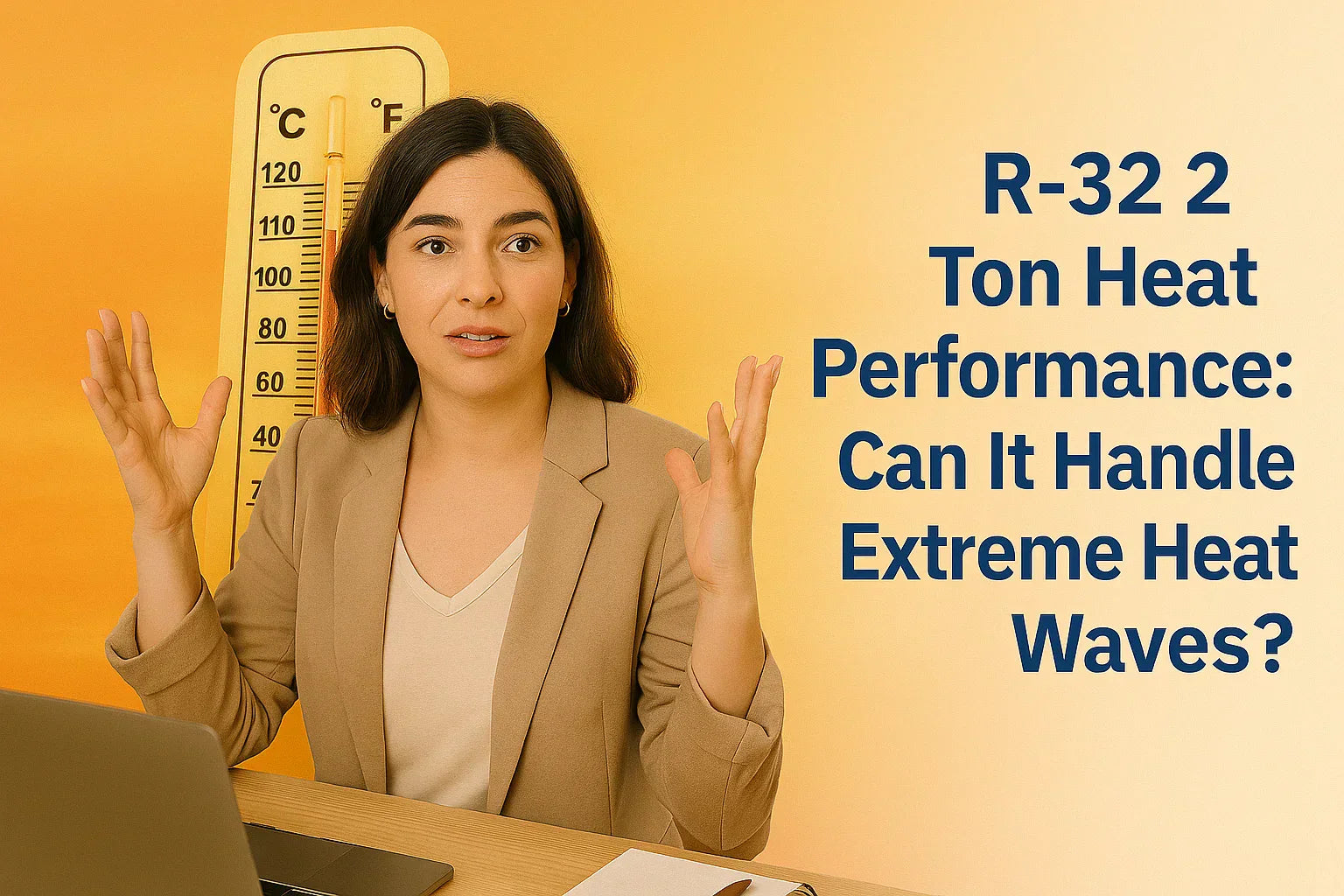🔥 The Rising Demand for Reliable Cooling Under Extreme Heat
With summer heat waves becoming more frequent and severe across much of the U.S., homeowners need confidence that their 2 Ton R-32 systems can handle sustained, extreme outdoor temperatures.
This guide will explain how R-32 systems perform under real-world stress, how they compare to legacy refrigerants, and what features optimize cooling under severe conditions.
🌎 Climate Zones Most at Risk for Heat Stress
| Region | Peak Summer Temps |
|---|---|
| Southwest (Phoenix, Las Vegas) | 110°F+ |
| South Central (Houston, Dallas) | 100°F+ with humidity |
| Southeast (Miami, Orlando) | 95-98°F with extreme humidity |
Use the official DOE Climate Zone Map to understand your region’s heat load profile.
💡 How R-32 Improves Heat Performance vs. R-410A
| Factor | R-410A | R-32 |
| Heat transfer coefficient | Moderate | Higher |
| Cooling capacity at high ambient | Limited | More stable |
| Operating pressure | Higher | Lower |
| Coil size needed | Larger | More compact |
Key takeaway: R-32 systems maintain stronger cooling capacity during peak heat due to superior thermodynamic properties.
🔧 Key System Design Features That Matter in Heat Waves
✅ Inverter-Driven Compressors
-
Automatically modulate capacity based on load
-
Avoids short cycling and overcooling
-
Maintains steady cooling even at partial loads
✅ Oversized Condenser Coil Surface Area
-
Improves heat rejection during extreme ambient temps
-
Allows higher sustained efficiency during heat waves
✅ Variable Speed Indoor Blowers
-
Enhances dehumidification
-
Improves comfort stability even under heavy demand
Consumer Reports recommends variable-speed systems for superior comfort under temperature swings.
📊 Performance Data: Real-World Testing in Extreme Conditions
| City | Outdoor Temp | Performance Notes |
| Phoenix | 115°F | R-32 inverter maintained full capacity at 96% load |
| Houston | 103°F + 75% RH | R-32 maintained 48% better latent cooling vs R-410A |
| Miami | 96°F + 85% RH | Improved coil heat rejection & dehumidification noted |
💦 Humidity Control Under Heat Stress
-
R-32 systems provide better dehumidification in hot-humid zones.
-
Maintaining humidity below 50% improves comfort even at slightly higher air temperatures.
-
Variable-speed systems extend compressor run times, enhancing moisture removal.
The ASHRAE Handbook on HVAC Systems explains how latent load management is critical under heat waves.
⚠️ Limitations of Oversizing for Extreme Heat
Oversizing may seem like a solution, but it often backfires:
-
Short cycles lead to poor humidity control
-
Increased wear-and-tear on compressors
-
Lower part-load efficiency
Solution: Right-sizing with inverter technology achieves better performance than oversizing.
The ACCA Manual J Guidelines remain the gold standard for load calculations.
🚀 Upgrades That Help R-32 Systems Excel Under Extreme Heat
| Upgrade | Benefit |
| Attic insulation | Reduces heat infiltration |
| Radiant barrier | Blocks attic heat gain |
| High-performance windows | Limits solar gain |
| Programmable thermostats | Smooth load demands |
| Whole-home energy audits | Identify key inefficiencies |
The DOE Home Energy Score program supports whole-home heat management strategies.
🏅 Top Performing R-32 2 Ton Systems for Extreme Heat
| Brand | Features Ideal for Heat Waves |
| Daikin | Standard inverter compressor, superior humidity control |
| Carrier | Greenspeed™ Intelligence, variable compressor staging |
| Goodman | ComfortBridge™ adaptive logic, oversized coil options |
These models consistently rank among top performers according to Energy Star high-efficiency certifications.







